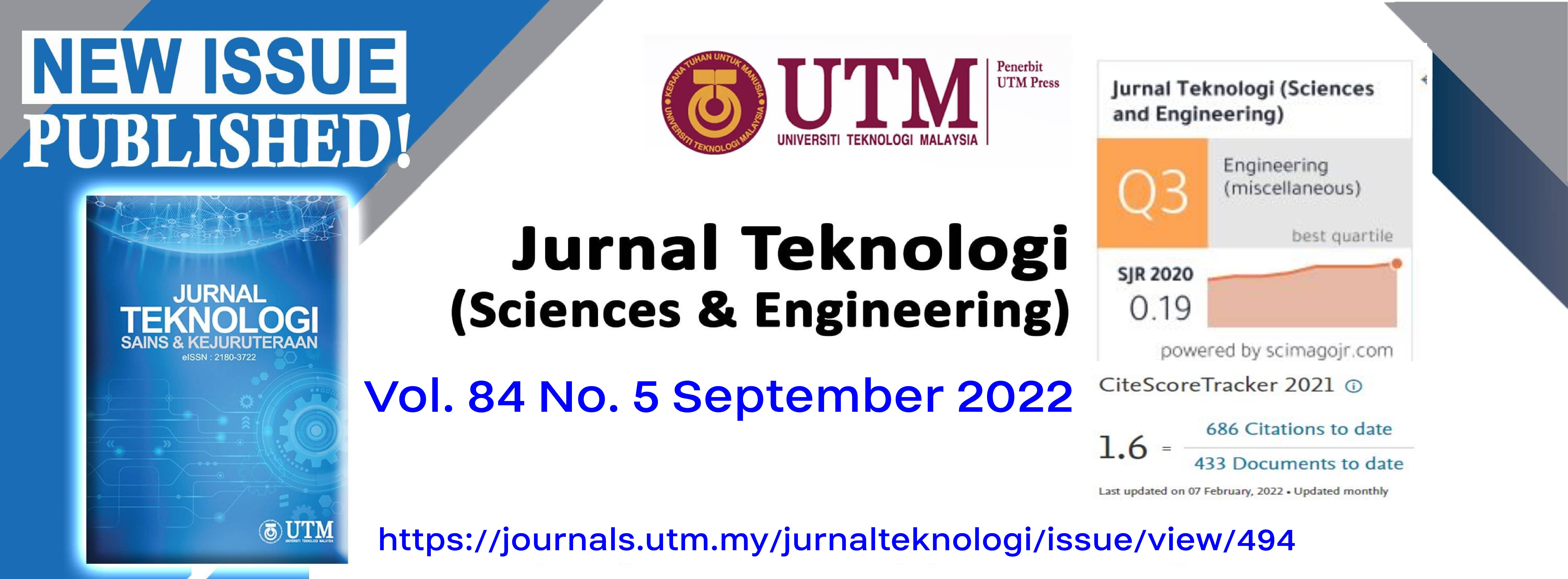MODELLING STOCK MARKET EXCHANGE BY AUTOREGRESSIVE INTEGRATED MOVING AVERAGE, MULTIPLE LINEAR REGRESSION AND NEURAL NETWORK
DOI:
https://doi.org/10.11113/jurnalteknologi.v84.18487Keywords:
ARIMA, MLR, multilayer perceptron, modelling, neural network, stock marketAbstract
Stocks, sometimes known as equities, are fractional ownership shares in a firm, and the stock market is a venue where investors may purchase and sell these investible assets. Because it allows enterprises to quickly get funds from the public, a well-functioning stock market is critical to economic progress. The purpose of this study is to model Bursa Malaysia using autoregressive integrated moving average (ARIMA), multiple linear regression (MLR), and neural network (NN) model. To compare the modelling accuracy of these models for intraday trading, root mean square error (RMSE) and mean absolute percentage error (MAPE) as well as graphical plot will be used. From the results obtained from these three methods, the NN model provides the best trade signal.
References
DeGennaro, Professor Ramon P. 2014. How the Stock Market Works. United States of America: THE GREAT COURSES Corporate Headquarters 4840 Westfields Boulevard, Suite 500 Chantilly, Virginia 20151-2299.
Bursa Malaysia. Bursa Malaysia. bursamalaysia.com. [Online] https://www.bursamalaysia.com/about_bursa/about_us/who_we_are.
Kamaruzzaman, Zetty Ain, Isa, Zaidi and Ismail, Mohd Tahir. 2012. Mixtures of Normal Distributions: Application to Bursa Malaysia Stock Market Indices. World Applied Sciences Journal. 781-790.
Ali, Norli, et al. 2009. Does Bursa Malaysia Overreact? International Research Journal of Finance and Economics. 175-193.
Picardo, Elvis. Investopedia. Investopedia. [Online] August 18, 2021. https://www.investopedia.com/articles/active-trading/013015/worst-mistakes-beginner-traders-make.asp.
Gligor, Cristian-Dragos Dumitru and Adrian. 2019. Wind Energy Forecasting: A Comparative Study between a Stochastic Model (ARIMA) and a Model Based on Neural Network (FFANN). The 12th International Conferences Interdisciplinarity in Engineering.
W. T. Ho, F. W. Yu. 2021. Predicting Chiller System Performance using ARIMA-regression Models. Journal of Building Engineering. 33: 101871.
Emmanuel Dave, Albert Leonardo, Marethia Jeanice, Novita Hanafiah. 2021. Forecasting Indonesia Exports using a Hybrid Model ARIMA LSTM. Procedia Computer Science. 179: 480-487.
Quang-Hung Luu, Man F. Lau, Sebastian P.H. Ng and Tsong Yueh Chen. 2021. Testing Multiple Linear Regression Systems with Metamorphic Testing. The Journal of Systems & Software. 182: 111062.
Mumtaz Ali, Ramendra Prasad, Yong Xiang, Ravinesh C. Deo. 2020. Near Real-time Significant Wave Height Forecasting with Hybridized Multiple Linear Regression Algorithms. Renewable and Sustainable Energy Reviews. 132: 110003.
Hassan, Mohamat Sabri and Mohd-Saleh, Norman. 2010. The Value Relevance of Financial Instruments Disclosure in Malaysian Firms Listed in the Main Board of Bursa Malaysia. Int. Journal of Economics and Management. 243-270.
Masafumi Nakano, Akihiko Takahashi, Soichiro Takahashi. 2018. Bitcoin Technical Trading with Artificial Neural Network. Physica A: Statistical Mechanics and its Applications. 510: 587-609https://doi.org/10.2139/ssrn.3128726
Wang Yuan, Luo Chao. 2021. An Intelligent Quantitative Trading System based on Intuitionistic-GRU Fuzzy Neural Networks. Applied Soft Computing. 108: 107471. https://doi.org/10.1016/j.asoc.2021.107471.
Bruce Vanstone, Gavin Finnie. 2009. An Empirical Methodology for Developing Stockmarket Trading Systems using Artificial Neural Networks. Expert Systems with Applications. 36(3, Part 2): 6668-6680.
Siami-Namini, Sima, Neda Tavakoli, and Akbar Siami Namin. 2018. A Comparison of ARIMA and LSTM in Forecasting Time Series. 2018 17th IEEE International Conference on Machine Learning and Applications (ICMLA) 1394-1401.
https://doi.org/10.1109/ICMLA.2018.00227.
Hyndman, Rob J, and Yeasmin Khandakar. 2008. Automatic Time Series Forecasting: The Forecast Package for R. Journal of Statistical Software. 27(3): 1-22. https://doi.org/10.18637/jss.v027.i03.
Guillén-Casla, Vanesa, Noelia Rosales-Conrado, María Eugenia, León-González, Luis Vicente, Pérez-Arribas Luis, and María Polo-Díez. 2011. Principal Component Analysis (PCA) and Multiple Linear Regression (MLR) Statistical Tools to Evaluate the Effect of E-beam Irradiation on Ready-to-eat Food. Journal of Food Composition and Analysis. 24(3): 456-464. https://doi.org/10.1016/j.jfca.2010.11.010.
Alwee, Razana, Siti Mariyam Shamsuddin, and Roselina Sallehuddin. 2015. Modeling of Violent Crime Rates with Economic Indicators Using Hybridization of Grey Relational Analysis and Support Vector Regression. Jurnal Teknologi. 76(1): 229-238.
Rahman, Nur Haizum Abd, Muhammad Hisyam Lee, Mohd Talib Latif, and Suhartono S. 2013. Forecasting of Air Pollution Index with Artificial Neural Network. Jurnal Teknologi. 63(2): 59-64.
Su, Mu-Chun, Woung-Fei Jean, and Hsiao-Te Chang. 1996. A Static Hand Gesture Recognition System using a Composite Neural Network. Proceedings of IEEE 5th International Fuzzy Systems. 786-792.
Downloads
Published
Issue
Section
License
Copyright of articles that appear in Jurnal Teknologi belongs exclusively to Penerbit Universiti Teknologi Malaysia (Penerbit UTM Press). This copyright covers the rights to reproduce the article, including reprints, electronic reproductions, or any other reproductions of similar nature.
















